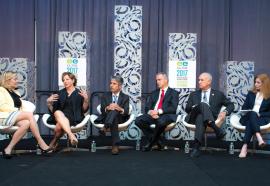Alliance to Save Energy's EE Global Conference
Picture Energy: May 8-9
The conference featured many of the stars in energy efficiency, including Alliance's president Kateri Callahan, Senator Jeanne Shaheen, former Duke Energy CEO Jim Rogers, and World Resources Institute CEO Andrew Steer.











